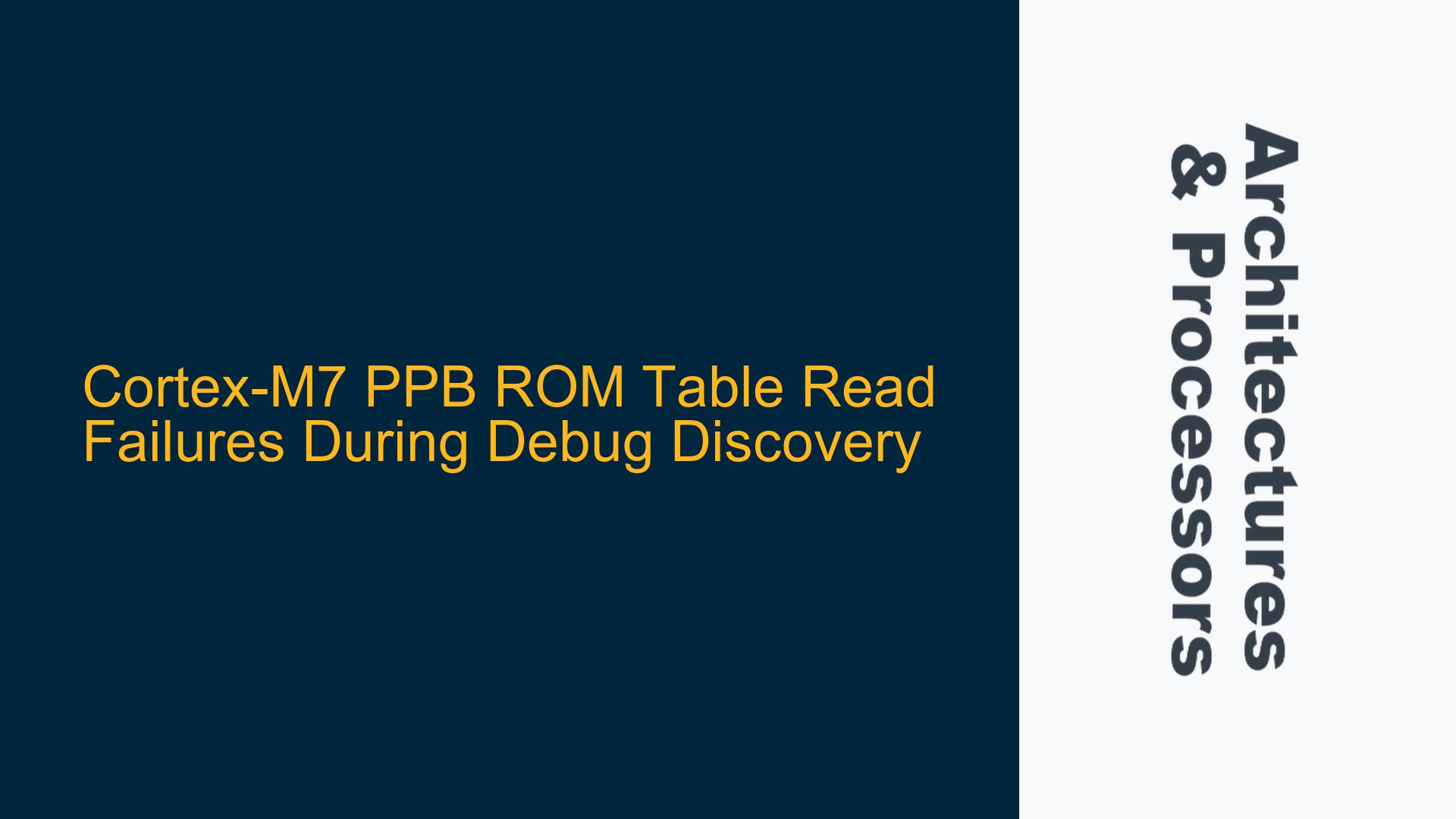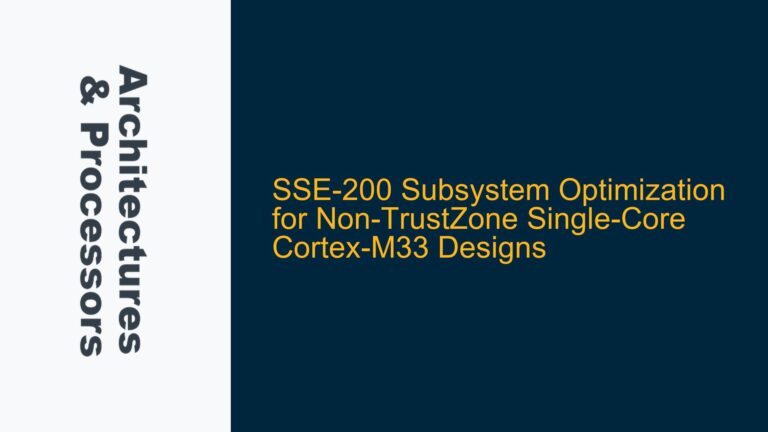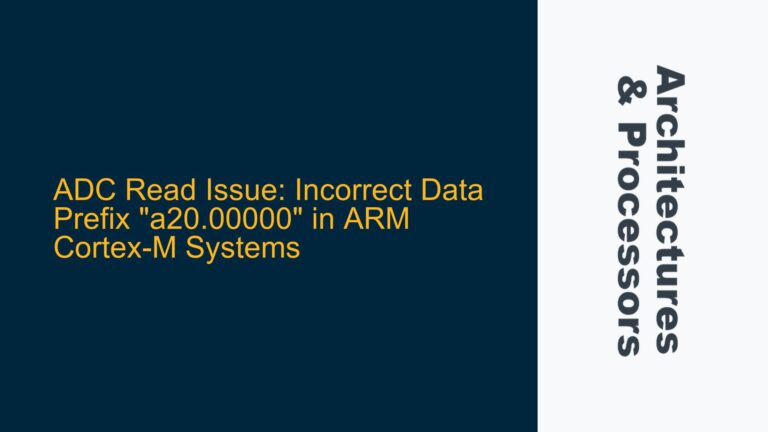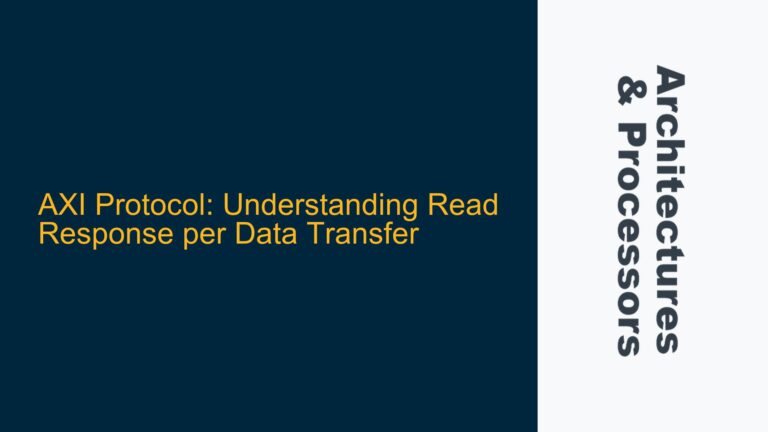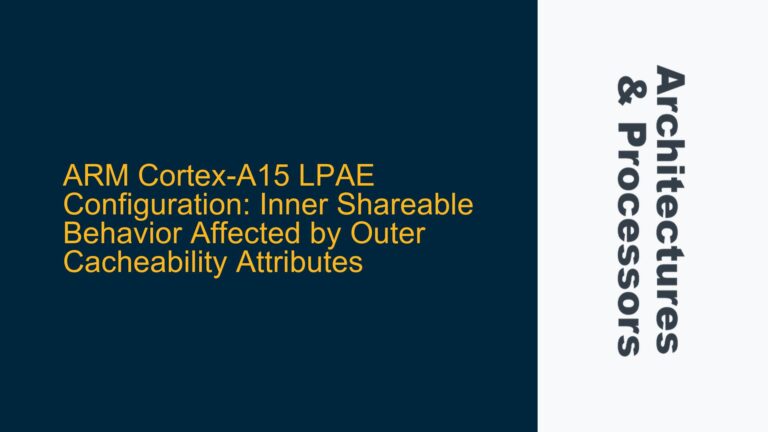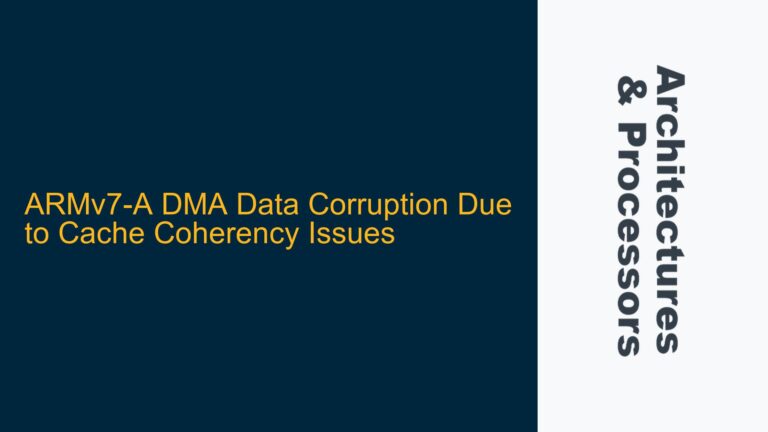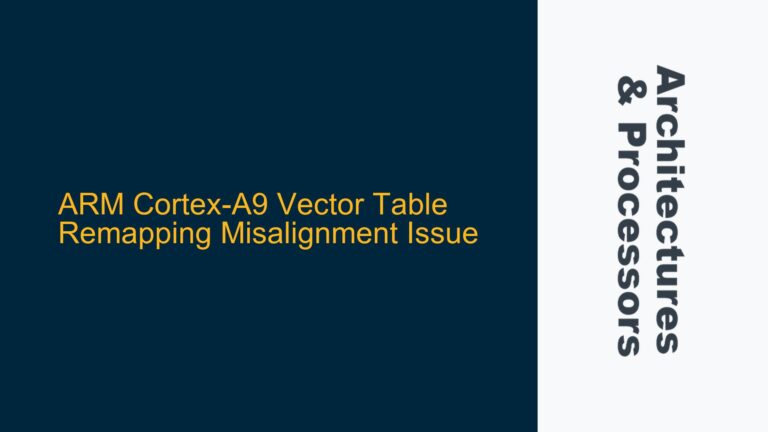Cortex-M7 PPB ROM Table Access Failures via Debug Port
The Cortex-M7 processor, when interfaced with a debug probe such as ARM DS (Debugger and System Analyzer), relies on a hierarchical discovery process to identify and access debug components. This process involves reading ROM tables located in the Processor ROM, PPB (Private Peripheral Bus) ROM, and other system-specific ROM tables. In this scenario, the debugger successfully reads the Processor ROM table but fails to access the PPB ROM table located at 0xE00FF000. The failure manifests as an inability to read 16 bytes from addresses such as 0xE00FFFF0, 0xE0041FF0, and 0xE0042FF0 on the CSMEMAP_0 interface. This issue is particularly perplexing because the simulation environment (VCS) successfully reads the PPB ROM table, while the FPGA implementation fails.
The discrepancy between simulation and hardware behavior suggests a hardware-software interaction issue, potentially involving address translation, bus arbitration, or clock/reset domain synchronization. The debugger’s inability to access the PPB ROM table indicates a breakdown in the communication between the CoreSight AHB-AP (Advanced High-performance Bus Access Port) and the Cortex-M7’s AHBD (AHB Debug) interface. This breakdown could stem from incorrect address mapping, misconfigured debug components, or timing-related issues in the FPGA implementation.
Address Translation Mismatch and Debug Component Configuration
The core issue revolves around the address translation and configuration of the debug components. The Cortex-M7’s PPB ROM table is located at 0xE00FF000, and the debugger attempts to read 16 bytes from addresses such as 0xE00FFFF0. However, the simulation environment shows transactions occurring at addresses like 0xE000EF**, which do not align with the expected PPB ROM table addresses. This discrepancy suggests that the address translation or mapping between the CoreSight AHB-AP and the Cortex-M7’s AHBD interface is incorrect or misconfigured.
One possible cause is the incorrect configuration of the CSMEMAP_0 and CSMEMAP_1 memory regions. These regions are responsible for mapping the debug components’ addresses to the physical memory space. If the CSMEMAP_0 region is not correctly configured to include the PPB ROM table addresses, the debugger will fail to access the required memory locations. Additionally, the PPB ROM table entries themselves may be misconfigured, leading to invalid or inaccessible addresses.
Another potential cause is the timing of the debug discovery process. The Cortex-M7 relies on a specific sequence of operations to initialize and access the debug components. If the debugger attempts to access the PPB ROM table before the necessary components are fully initialized, the read operations will fail. This could be due to incorrect reset deassertion ordering, clock domain synchronization issues, or missing initialization sequences in the FPGA implementation.
Resolving PPB ROM Table Access Failures: Debugging and Configuration Fixes
To resolve the PPB ROM table access failures, a systematic approach is required to identify and address the root cause. The following steps outline the troubleshooting process:
Step 1: Verify CSMEMAP_0 and CSMEMAP_1 Memory Region Configuration
The first step is to verify the configuration of the CSMEMAP_0 and CSMEMAP_1 memory regions. These regions must be correctly mapped to include the PPB ROM table addresses (0xE00FF000 and related ranges). Use the debugger to inspect the memory region configuration and ensure that the PPB ROM table addresses are within the mapped range. If necessary, update the memory region configuration to include the correct addresses.
Step 2: Validate PPB ROM Table Entries
Next, validate the entries in the PPB ROM table. The ROM table entries must point to valid and accessible addresses. Use the debugger to read the ROM table entries and verify that they match the expected values. If the entries are incorrect, update the ROM table configuration to reflect the correct addresses.
Step 3: Check Reset and Clock Domain Synchronization
Ensure that the reset and clock domains are properly synchronized. The Cortex-M7 and its debug components rely on a specific sequence of reset deassertion and clock initialization. Verify that the reset signals are deasserted in the correct order and that the clocks are stable before the debugger attempts to access the PPB ROM table. Use logic analyzers or oscilloscopes to monitor the reset and clock signals during the debug discovery process.
Step 4: Analyze Address Translation and Bus Arbitration
Analyze the address translation and bus arbitration mechanisms between the CoreSight AHB-AP and the Cortex-M7’s AHBD interface. Ensure that the address translation logic correctly maps the PPB ROM table addresses to the physical memory space. Additionally, verify that the bus arbitration logic allows the debugger to access the required memory locations without contention.
Step 5: Debug Initialization Sequences
Review the initialization sequences for the Cortex-M7 and its debug components. Ensure that all necessary initialization steps are performed before the debugger attempts to access the PPB ROM table. This includes configuring the debug components, enabling the necessary clocks, and setting up the memory regions. Use the debugger to step through the initialization sequences and verify that each step is executed correctly.
Step 6: Compare Simulation and Hardware Behavior
Compare the behavior of the simulation environment (VCS) with the FPGA implementation. Identify any differences in the address translation, bus arbitration, or initialization sequences that could explain the discrepancy in PPB ROM table access. Use the simulation environment to replicate the FPGA behavior and identify potential issues.
Step 7: Implement Fixes and Validate
Based on the findings from the previous steps, implement the necessary fixes to resolve the PPB ROM table access failures. This may involve updating the memory region configuration, correcting the ROM table entries, adjusting the reset and clock synchronization, or modifying the address translation and bus arbitration logic. After implementing the fixes, validate the changes by repeating the debug discovery process and verifying that the PPB ROM table is accessible.
By following these troubleshooting steps, the PPB ROM table access failures can be systematically identified and resolved. The key is to carefully analyze the address translation, configuration, and initialization sequences to ensure that the debugger can successfully access the required memory locations. With the correct configuration and synchronization, the Cortex-M7’s debug components will function as expected, enabling seamless debugging and system analysis.
